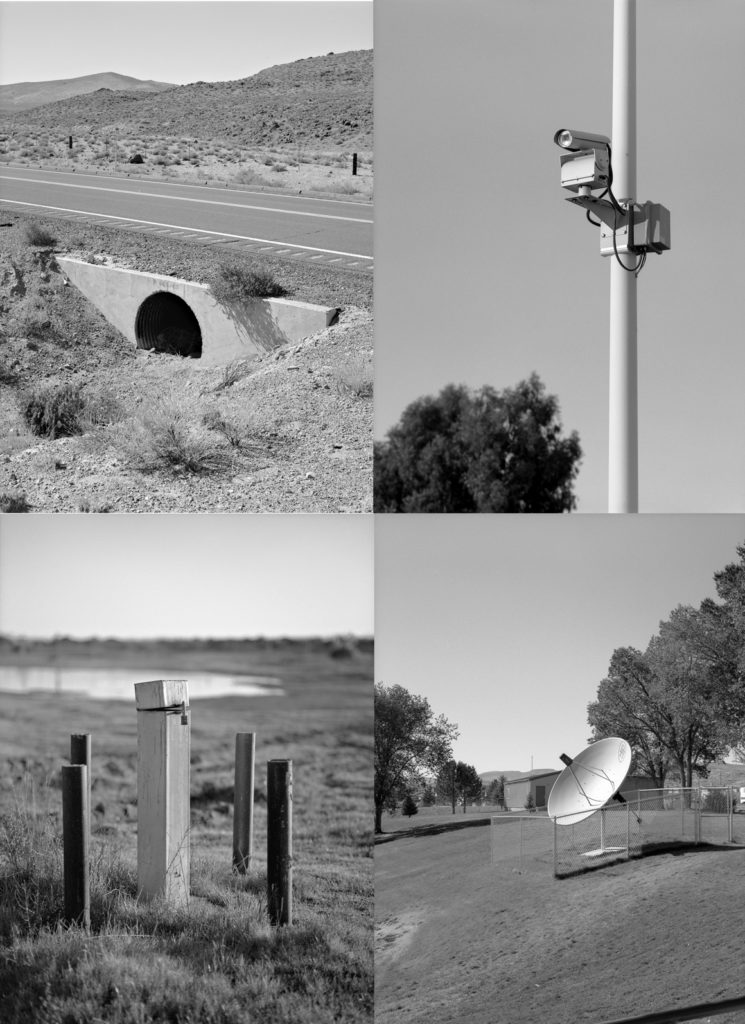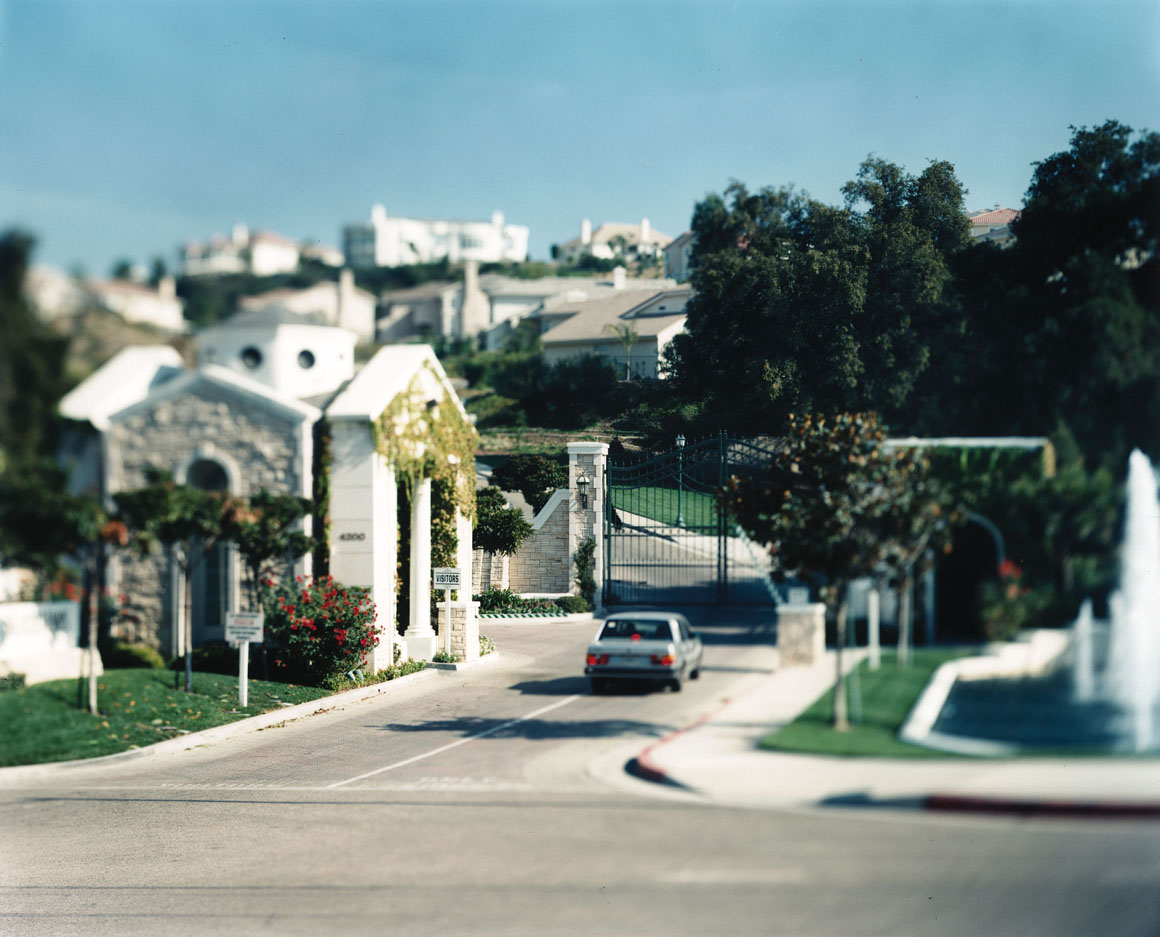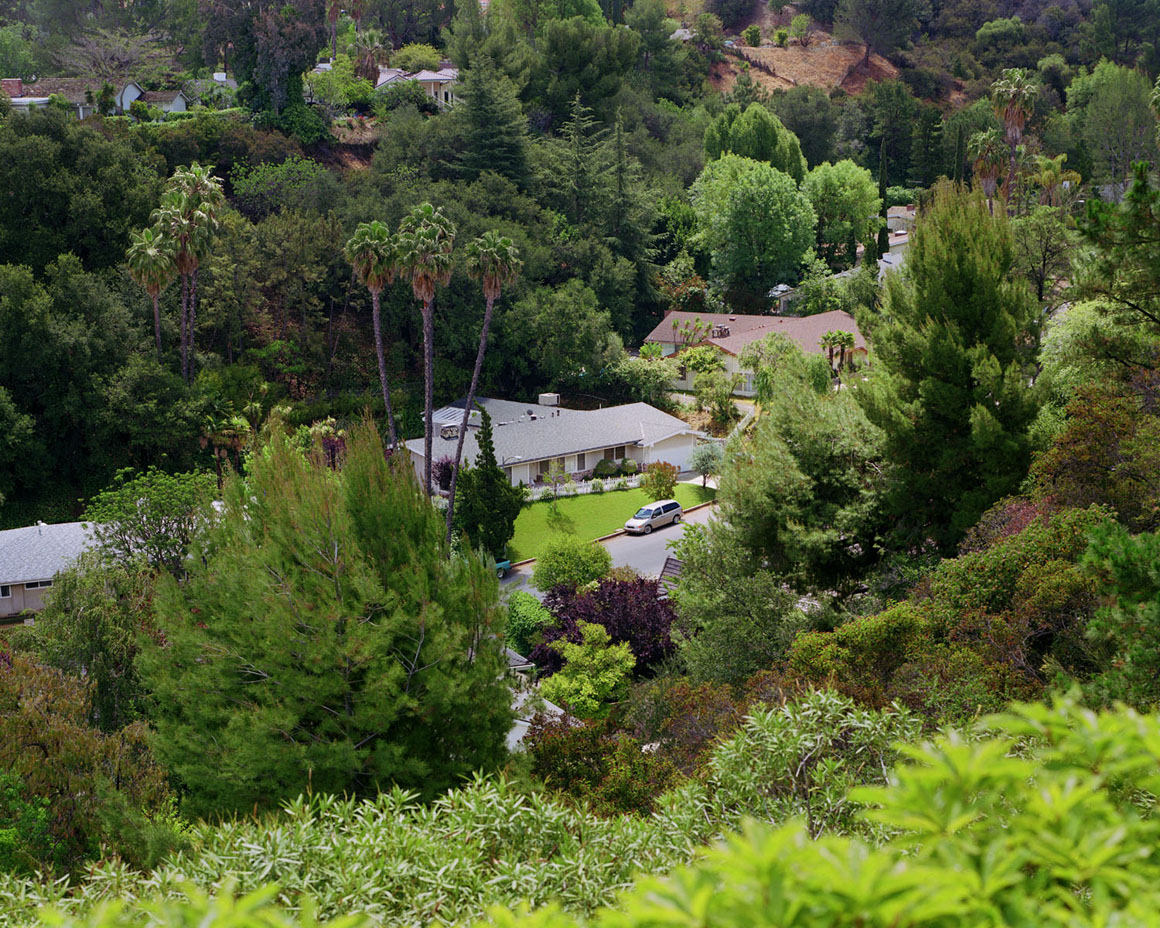In his 1953 photograph of Rudolph Schindler’s residence on King’s Road, Julius Shulman constructed an image of perfection. Viewed from the doorway of a glass-enclosed living room, a sunlit courtyard beckons us into the utopia built by modernism: pristine, harmonious, and aesthetically flawless.
But for any recent visitor who has schlepped across the muddy walkways or stumbled through the musty rooms of this 80-year-old structure, Shulman’s photograph may seem a bit fantastical. In reality, the house offers a range of contradictory experiences: the rooms are cramped and awkward in places, yet the scale is inviting; the house is pleasantly exposed to the outdoors, yet the interior is dark. One expects to feel the weight—and the clarity—of history, but the house instead has a mystery and a curious tranquility that have not been eroded by years of serving as an icon of modernism.
For a newer generation of photographers who take architecture as their subject, it is precisely these contradictions that enrich their vision of the built environment. These photographers seek out the hidden or the unnoticed in our everyday surroundings; they challenge the historical record or the received narrative of a place; and above all they attempt to represent a building or a space as it is subjectively experienced: architecture as felt, sensed, remembered, or imagined.

The weight of history is itself the subject in German photographer Candida Höfer’s work. Höfer’s own 2000 photograph of the Schindler house is a stark and unflattering image. It presents a view of one of the main living spaces, but without the detritus of living: no furniture, rugs, wall hangings, knickknacks, or plants. There is no hint of human presence, only the raw architecture of concrete floors and walls, a copper fireplace, heavy wood beams. Visually, this portrait of the room privileges the space over its occupants, but psychologically it focuses on the home’s collective occupation—the decades of long- and short-term residents, tourists, scholars, and photographers, such as Höfer herself, who have constructed its monumental history through their own responses to the space.

Some architectural icons are not aesthetic monuments at all, but buildings that achieve their status through historical accident, through their incidental connection to some larger narrative. One such structure is the Unabomber’s cabin, the Montana shack where serial killer Ted Kaczynski lived and planned his crimes. In a 1998 series by San Francisco photographer Richard Barnes, the cabin is documented as an anthropological artifact. Its physical qualities—austerity, isolation, lack of technology—seem analogous to the life it housed and nurtured. Ironically, the shack is, as a built form, the very definition of ordinary, and Barnes’ photographs have a deliberately flat, journalistic quality that makes this obvious. But, as a subtext, the structure’s historical context is impossible to efface, and it gives these photographs their considerable power to disturb and intrigue.

The camera is an anthropological tool for many contemporary photographers. Some work in the tradition of Hilla and Bernd Becher, recording every iteration they can find of various architectural typologies, such as freeway interchanges or strip malls. In Oakland photographer Mark Luthringer’s recent series, 40 Monuments to Progress, in which he has stalked and captured an eccentric collection of technological devices that inhabit our outdoor spaces, the iterations are like portraits. Each of his subjects—a parking lot security camera, a roadside rain culvert, a satellite dish—has a quirky character, sometimes ominous, sometimes comical, and sometimes utterly mysterious. Luthringer admits that often even he cannot identify what it is he has photographed. Nevertheless, each of these seemingly benign objects is similarly transformed from banal to surreal. Crisply composed, with a velvety, almost airbrushed quality, the photographs fetishize the sculptural qualities of these artifacts and exaggerate their often incongruous placement within our everyday environment.

Luthringer’s obsessive scrutiny of sculptural form is also visible in the work of Berkeley photographer Alice Wingwall, though in her 1998 photographic collage, Lapidarium, the subject is a single structure, the façade of a church in Venice. The work is an assemblage of views of the church face, each shot from a slightly different angle, so that together they form a kind of skewed panorama. This configuration of multiple perspectives, similar to the photographic portraits by David Hockney in the 1980s, is what Wingwall calls a “surrogate” of the building. Indeed the title, a Latin term for a collection of stoneworks, suggests the way the parts of the façade, fragmented in the photos and then reassembled, constitute the whole. But the collage is more than a visual surrogate; it is a record of experience, a visual narration of the photographer’s sensory and emotional interaction with the structure. This photographic treatment suggests that architecture is never solid, but exists only as it unfolds in our perception.

The fallibility of perception, as it mediates our experience of architecture, is the subject of German photographer Oliver Boberg’s work. Boberg begins by taking a series of pictures of some common urban structure or space, nondescript sites such as underpasses or garages that could exist in any city. Then he creates a composite, physical model, realistic but generic, in which particularizing details are removed. The model is then photographed at a scale and angle that make it appear to be a real location. The viewer is fooled not only by the quality of the model and the technical precision of the photograph, but by the ordinariness and utter familiarity of the scene. This perceptual disconnection is akin to what police say happens in many car accidents—we drive through a familiar intersection, and, instead of seeing what is actually there, our brains mistakenly supply us with a stock image from our mental archives. Boberg is constructing his own stock images, to test our level of awareness of the environment we occupy, an environment, he seems to argue, whose banality and aesthetic sterility have numbed our senses.

Marc Räder, another German photographer, is using Boberg’s strategy in reverse. In his 1996 series Scanscape, an exploration of suburban developments in California, Räder uses a simple camera technique, a very short depth of field, to transform these otherwise benign images of tract homes, business parks, and outlet malls. With only a small area of the photograph in focus, these locations resemble small-scale models, like desk-top architectural dioramas. What makes the illusion work, though, is not the simple manipulation of the camera’s lens, but the artificiality already built into the architecture: the earnestly contrived styles of developer-designed neighborhoods, the reassuring sameness and predictability that pass for community. One suspects the original models of these sites looked exactly like Räder’s photographs.

Suburbia is a potent subject for many contemporary photographers. Larry Sultan’s recent series, The Valley, explores the culture of the porn industry in the San Fernando Valley. Though he documents the activity both on and off camera, his focus is the sets themselves: suburban houses with ornately landscaped exteriors and lavishly, though often grotesquely, decorated interiors. The photographer gives a light touch to the heavy irony of the subject matter: homes that once nurtured the dreams of the aspiring nouveau riche now clandestinely serve to feed the shallow fantasies of anonymous consumers. In one exterior image, a broad neighborhood view of single-family lots nestled in lush greenery, the visible and invisible merge. The photograph hints at the layers of history that have constructed this view of the valley: the original coastal wilderness, supplanted by wheat farms and fruit orchards, which were in turn displaced by the onslaught of sprawl. The porn industry is the newest and least visible layer, and perhaps the most fleeting, but it is all the more disturbing for its ability to have penetrated the veneer of security that the suburbs traditionally represent.

Oakland photographer Todd Hido’s images are less densely constructed but more directly affecting explorations of what might lie underneath the façade of suburban utopia. The photographs in his House Hunting series, mostly shot at night and outdoors, feel at first a little nostalgic and sad, as if one were witnessing the end of a long summer day, when darkness has finally brought stillness. But a few details—the acute angle of the pavement at an intersection, the harshness of a street light competing with the glow from a bedroom window—begin to transform this view into another more menacing kind of scene: a crime about to happen, perhaps, or one already committed. Or perhaps something less dramatic but more sinister is being captured: the futile feeling of another day having passed too quickly.

Hido’s emotionally charged images remind us that architecture is more than its physical parts—the spaces we occupy are spaces we interpret and reinterpret, as we translate sensory experiences into thoughts and feelings. Photographer Uta Barth has created a number of photographic series that investigate architectural space in terms of these intangible qualities. In a 2000 series titled … and of time, Barth, a UC Riverside professor, photographed spaces inside her home, recording a succession of silent, still moments. In the images we see just fragments of rooms, as bars of sunlight drift almost imperceptibly across a carpet or behind a sofa. The architectural details are rendered immaterial: the windows are shadows, the walls are fields of color, and the only occupant of the space seems to be light itself. Most of the works in this series are diptychs, two sequential moments paired together, that suggest our sense of architectural space is a shifting thing, as ephemeral as our sense of time.

Courtesy of San Francisco Museum of Modern Art and Sonnabend Gallery, New York.
Perhaps no photographer has more eloquently captured this subjective experience of architecture than Hiroshi Sugimoto. In his Architecture series—portraits of icons such as the Chrysler Building and Notre Dame du Haut—the forms are blurry, fragmented, and out of context, as if the camera had recorded a fleeting mental image of a building rather than the building itself. These images, in their slyly disturbing manipulation of familiar details, speak to the often unquestioned power of photography in constructing the identity of an architectural monument. Sugimoto’s photograph of the Schindler House is very different from Candida Höfer’s version in its emphasis on mood and sensation rather than clinical details. But both photographers share with their contemporaries a desire to retreat from the glamorizing vision of mid-century architectural photographers, in favor of a more complex, but ultimately more honest, representation.
For more information on the artists, please see the following sources:
Pfleger, Susanne, et al. Candida Höfer: Photographie. München: Schirmer/Mosel, 1998.
Mark Luthringer’s website: www.luthringer.com.
Boberg, Oliver, et al. Oliver Boberg. Osfildern-Ruit: Hatje Cantz Publishers, 2004.
Rader, Marc, et al. Scanscape. Barcelona: Actar Press, 1999.
Sultan, Larry. Larry Sultan: The Valley. Zurich: Scalo Publishers, 2004.
Hido, Todd. House Hunting. Tucson, AZ: Nazraeli Press, 2001.
Conkelton, Sheryl, et al. Uta Barth: In Between Places. Seattle, WA: Henry Art Gallery, 2000.
Sugimoto, Hiroshi, et al. Sugimoto: Architecture. Chicago: Museum of Contemporary Art, 2003.
Author Ruth Keffer is a curatorial associate for architecture and design at the San Francisco Museum of Modern Art and a contributor to Surface and Loud Paper magazines.
Opening photograph by Ragina Johnson.
Originally published 3rd quarter 2004 in arcCA 04.3, “Photo Finish.”






